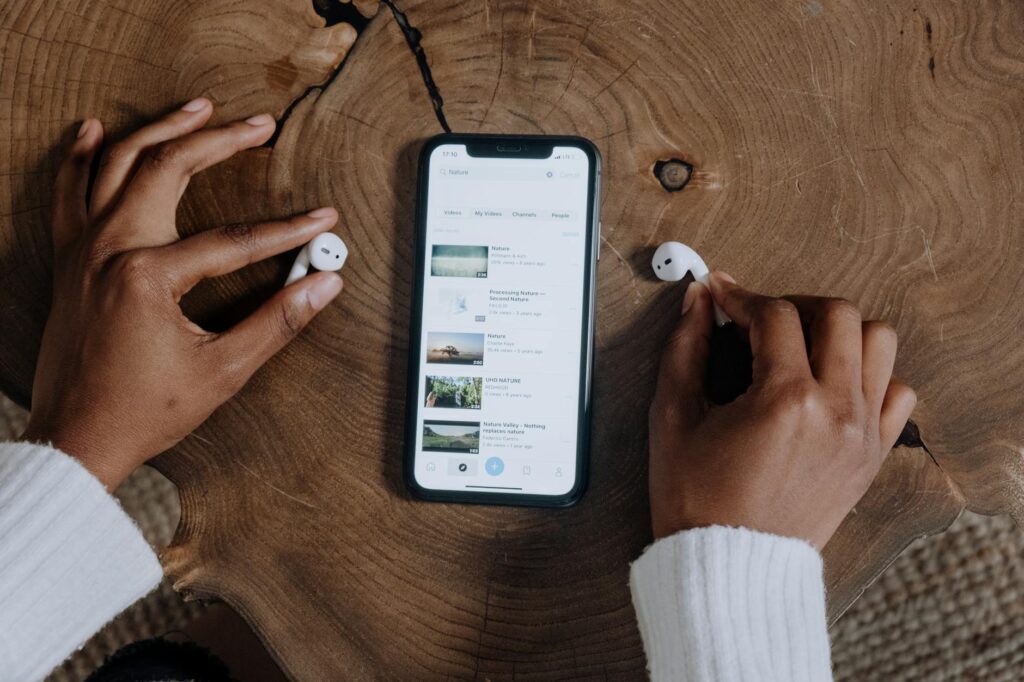You’re Sitting on a Goldmine of Content. Let’s Dig In.
You did it. You poured hours—maybe even days—into crafting that perfect blog post. You researched, you wrote, you edited until your eyes blurred. You hit publish, shared it once or twice, and then… crickets. Sound familiar? We’ve all been there. It feels like you’re on a content treadmill, constantly needing to create something new just to stay visible. But what if I told you that you’re likely ignoring your most valuable asset? That one great piece of content isn’t a one-and-done deal. It’s the starting point. This is where content repurposing completely changes the game. It’s the secret sauce that top marketers use to squeeze every last drop of value from their work, reaching new audiences and driving results without burning out.
Key Takeaways
- Work Smarter, Not Harder: Content repurposing allows you to create multiple new assets from a single original piece, saving immense time and resources.
- Reach New Audiences: People consume content differently. Repurposing a blog post into a video, podcast, or infographic lets you connect with people on their preferred platforms.
- Boost Your SEO: By creating various content formats, you can target different keywords and build a stronger backlink profile, reinforcing your authority on a topic.
- Reinforce Your Message: Repetition is key to memory. Presenting your core message in multiple formats helps it stick with your audience and establishes you as an expert.
What is Content Repurposing (and Why It’s a Game-Changer)
Let’s get simple. Content repurposing is the practice of taking one piece of existing content and changing its format to serve a new purpose or reach a different audience. It’s not about just copy-pasting your blog post onto LinkedIn. No. It’s about thoughtfully adapting it. Think of it like a master chef using a prime cut of beef. They might serve a beautiful steak one night. The next day, the leftovers could become incredible tacos, a hearty stew, or savory sandwiches. The core ingredient is the same, but the experience is totally different and appeals to different cravings.
That’s what we’re doing with our content. Your well-researched blog post is the prime cut. That post can become a series of tweets, a quick-hitting Instagram carousel, a detailed YouTube video, a segment in your podcast, or a visually stunning infographic. You’re not starting from scratch. You’re building on a solid foundation of work you’ve already done. This isn’t laziness; it’s peak efficiency. It’s about respecting the effort you’ve already put in and maximizing its impact across the entire digital landscape. The benefits are massive: you save time, you reach people who would never read a 2,000-word article but will gladly watch a 5-minute video, and you reinforce your authority by showing up everywhere with valuable insights on a specific topic. It’s a win-win-win.

The ‘Work Smarter, Not Harder’ Mindset for Your Content Strategy
The constant pressure to ‘feed the beast’—the endless void of social media and search engines—is a major source of burnout for creators and marketers. You feel like if you’re not publishing something new every single day, you’ll become irrelevant. This is a myth. A dangerous one. Quality will always, always trump quantity. One pillar piece of content, repurposed effectively, can drive more traffic, engagement, and leads than ten mediocre, rushed articles.
Adopting a content repurposing mindset means you shift from being a ‘content creator’ to a ‘content strategist’. Before you even write that next blog post, you should be thinking about its potential afterlives. How can this be broken down? What are the key visual elements? What’s the most powerful quote that could stand on its own? This strategic foresight is what separates amateur content efforts from professional, results-driven marketing engines. You start seeing every piece of content not as an end point, but as the nucleus of its own little content ecosystem. This approach also protects your most valuable resource: your creative energy. Instead of depleting it on a content hamster wheel, you invest it in creating truly exceptional core assets, knowing you have a plan to make them work for you for months, or even years, to come.
Your Content Repurposing Playbook: 10 Actionable Strategies
Okay, enough theory. Let’s get to the practical, rubber-meets-the-road stuff. How do you actually *do* this? Here are ten battle-tested strategies to get more mileage from your content, starting today.
-
Turn Pillar Blog Posts into Video Scripts
A comprehensive blog post is basically a pre-written script. Go through your best-performing articles—the ones with high traffic and engagement. The structure is already there: your H2s and H3s are your talking points. You can create a ‘talking head’ video where you discuss the concepts, a more dynamic presentation with B-roll, or even an animated explainer video. Video is huge on platforms like YouTube and LinkedIn, and it allows you to connect with an audience that prefers watching over reading. Just read your post out loud, smooth out the language to sound more natural, and you’re 80% of the way to a finished video.
-
Chop Up Videos for Social Media Gold
That video you just made? Its life is just beginning. A 10-minute YouTube video contains dozens of potential social media assets. Pull out the most impactful 30-60 second clips to create Reels for Instagram or Shorts for YouTube. Grab a compelling quote and turn it into a graphic for Twitter or Facebook. Transcribe the entire video and you have a new blog post (or you can use the transcript to improve the SEO of the original). You can even pull the audio and release it as a podcast episode. One video can fuel your social media calendar for weeks.
-
Transform Data and Lists into an Infographic
Do you have a blog post that’s heavy on statistics, steps, or data points? This is a prime candidate for an infographic. Humans are visual creatures. We process images 60,000 times faster than text. An infographic takes your dense information and makes it digestible, shareable, and visually appealing. Use tools like Canva or Visme to create a stunning graphic that summarizes your key points. Infographics are amazing for generating backlinks, as other blogs will happily share them and credit you as the source.

Photo by Atahan Demir on Pexels -
Break Down Key Insights into a Tweetstorm or LinkedIn Carousel
Not everyone has time for a full article. Take the main arguments or key takeaways from your pillar content and break them down into a series of connected tweets (a ‘tweetstorm’) or a swipeable carousel post for LinkedIn or Instagram. Each slide or tweet should focus on a single, powerful idea. This format is perfect for the fast-paced nature of social media, delivering value in bite-sized chunks and encouraging engagement and shares. The final slide or tweet should always link back to the original, full-length piece of content.
-
Bundle a Webinar into an Automated Email Course
If you’ve ever hosted a live webinar, you have an incredible asset just sitting there. Don’t let it gather digital dust. Edit the recording, break the content down into 3-5 logical modules, and turn it into a free email course. Each day, participants get an email with a link to a short video segment and a small ‘homework’ assignment. This is a fantastic way to build your email list and nurture leads over time, providing immense value straight to their inbox.
-
Transcribe Podcast Episodes into SEO-Rich Blog Posts
Your podcast is a treasure trove of content, but it’s largely invisible to search engines. By transcribing your episodes, you can instantly create detailed, keyword-rich blog posts. Use a service like Descript or Otter.ai to get an automated transcript, then have a writer clean it up, add headings, images, and links. This makes your audio content discoverable by Google and serves the segment of your audience that prefers to read or skim for information.
“Every piece of content you create should be viewed as the start of a conversation, not the end. Repurposing is how you keep that conversation going on different platforms, in different formats, with different people.”
-
Flesh Out Customer Testimonials into In-Depth Case Studies
A great customer quote is nice. A detailed case study is a powerful sales tool. Take your best testimonials and reach out to those customers. Interview them about the specific problem they faced, why they chose your solution, and the quantifiable results they achieved. Combine their story with data and visuals to create a compelling case study that proves your value to potential clients. This is repurposing at its most strategic, turning social proof into a bottom-of-the-funnel sales asset.
-
Compile Your ‘Greatest Hits’ Blog Posts into an Ebook
Look at your analytics. Identify 5-7 blog posts that are all centered around a common theme (e.g., ‘Beginner’s Guide to SEO’). You’ve already done the hard work of writing them! Now, just organize them into a logical flow, write a new introduction and conclusion, design a cover, and bundle them as a downloadable PDF ebook. This becomes a perfect lead magnet to grow your email list. People love comprehensive guides, and you can create one in an afternoon using content you already have.

Photo by cottonbro studio on Pexels -
Leverage Internal Data for a Whitepaper or Original Research Report
Companies often sit on a mountain of proprietary data from surveys, user behavior, or market analysis. This data, while used internally, can be an external content goldmine. Anonymize and aggregate the most interesting findings into an official whitepaper or an ‘State of the Industry’ report. Original research is one of the most effective ways to generate high-authority backlinks and establish your company as a thought leader. It’s unique, valuable, and something your competitors can’t easily replicate.
-
Convert Presentation Slides into a SlideShare or Carousel Post
Have you given a presentation at a conference or a sales meeting? Those slides are a ready-made piece of content. Upload the deck to SlideShare (which is owned by LinkedIn and great for B2B visibility) or take the key slides and convert them into an image-based carousel post for LinkedIn and Instagram. It’s a quick and easy way to share your expertise in a highly visual format.
Tools to Supercharge Your Content Repurposing Workflow
Doing all this manually can be a drag. Luckily, we live in an age of amazing tools that can streamline the process. Here are a few essentials for your toolkit:
- Canva: Your go-to for creating visuals. Perfect for turning quotes into graphics, data into simple infographics, and slides into social media carousels.
- Descript: A game-changer for video and audio. It transcribes your content and lets you edit the video/audio by simply editing the text. It makes pulling out clips and creating transcripts incredibly easy.
- Lumen5 or InVideo: AI-powered tools that can automatically turn your blog post text into a simple video, complete with stock footage and captions. A great starting point for video creation.
- Missinglettr: This tool can automatically detect when you publish a new blog post and then create a year’s worth of social media campaigns to promote it, pulling quotes and images from the post.
- Otter.ai: A fantastic tool for transcribing audio from podcasts, webinars, or interviews, giving you the raw text you need to create written content.
Conclusion: Stop Creating, Start Repurposing
The goal isn’t to create more content. It’s to get more results from the content you already have. By shifting your perspective and embracing a content repurposing strategy, you escape the content treadmill. You amplify your message, reach new corners of the internet, and build a stronger, more resilient brand presence without burning yourself out. So before you start brainstorming your *next* big idea, take a look at the goldmine you’ve already created. Your best new piece of content might be hiding in plain sight.
FAQ
How do I know which content is best to repurpose?
Start with your top-performing content. Look in your analytics for posts that have high traffic, high engagement (comments, shares), and a long shelf life (evergreen topics). These are your proven winners and are most likely to perform well in other formats.
Won’t my audience get bored of seeing the same message?
Not at all. Firstly, different people prefer different formats. Someone who saw your tweet might have missed the blog post. Secondly, the internet is a noisy place. It takes multiple impressions for a message to sink in. Seeing your core ideas reinforced in different ways across different platforms actually strengthens your authority and brand recall, it doesn’t cause fatigue.
How much should I change the content when repurposing it?
The core message or data should remain the same for consistency. However, you must adapt the delivery for the new platform. A blog post needs to be conversational for a video script. A long-form guide needs to be broken into single-thought chunks for a Twitter thread. The key is to re-package, not just re-post. Tailor the format, length, and tone to the expectations of the platform’s audience.



 The Science of A/B Testing: Beyond Simple Changes
The Science of A/B Testing: Beyond Simple Changes  Write an About Us Page That Converts: The Ultimate Guide
Write an About Us Page That Converts: The Ultimate Guide  The Business of Independent Filmmaking: A Survival Guide
The Business of Independent Filmmaking: A Survival Guide  Negotiate a Favorable Lease: A Business Owner’s Guide
Negotiate a Favorable Lease: A Business Owner’s Guide  The Unwritten Rules of Business Etiquette You Must Know
The Unwritten Rules of Business Etiquette You Must Know  Manage Your Online Reputation: The Ultimate Business Guide
Manage Your Online Reputation: The Ultimate Business Guide  A Guide to NFT Generative Art Platforms (2024)
A Guide to NFT Generative Art Platforms (2024)  Crypto’s Carbon Footprint: The Real, Nuanced Story
Crypto’s Carbon Footprint: The Real, Nuanced Story  Join a Web3 Community: The Ultimate Networking Guide
Join a Web3 Community: The Ultimate Networking Guide  What Are AMMs? Automated Market Makers Explained Simply
What Are AMMs? Automated Market Makers Explained Simply  NFT Legal Questions Answered: A Simple Guide
NFT Legal Questions Answered: A Simple Guide  Build a Balanced Cryptocurrency Portfolio: A 2024 Guide
Build a Balanced Cryptocurrency Portfolio: A 2024 Guide